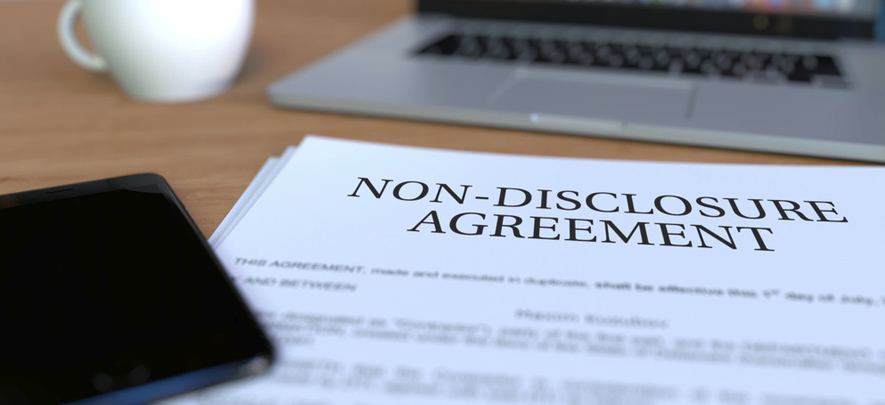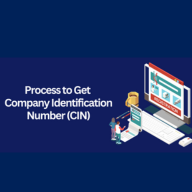Key elements of a non-disclosure agreement

Legal & Compliance
265 week ago — 6 min read
Background: A Non-Disclosure Agreement (NDA) is the contract which states that all confidential information of a company should be protected in case of exchange of information with another party.The liabilities associated with the violation of an NDA are quite severe as compared to the breach of a verbal agreement. Vakilsearch in their previous article explained how to convert a sole proprietorship to a Private Limited Company. In this article they share the key elements of an NDA.
In various business contracts there arises a need for one party to share certain confidential information with another party. However, it is essential to ensure that while you are sharing confidential information, the other party respects the same, uses it only for the manner prescribed and does not use the confidential information to the detriment of the party sharing it. This is often done through what is called a Confidentiality Agreement or an NDA. This article seeks to analyse the key elements that are present in every kind of NDA.
Parties to the agreement
This element of defining the parties to the agreement is a pretty straightforward exercise through which the parties to the agreement are named in the form of disclosing party (the party that is sharing confidential information) and the recipient (the party that is receiving confidential information). However, one needs to keep in mind that such parties need to be clearly specified and it should be clearly mentioned whether subsidiaries or group companies can be privy to such information. It should also be mentioned as to whether the party is permitted to reveal such confidential information to other parties such as a partner or agent that this party is working with.
Also read: Vendor Agreement: Why is it important?
Defining confidential information
This section needs to define as to what information would come within the purview of the NDA. While the disclosing party would want to draft this in as broad a manner as possible to bring all sorts of information under this purview, the recipient would want to ensure that the information is clearly identified and not of a very broad nature such that the recipient is aware of what can be disclosed and what cannot be. One tricky aspect is to make clear as to whether oral information can be made confidential or whether the confidentiality agreement would only be restricted to the information given in writing. One way of dealing with such a situation could be that oral information could be treated as confidential as long as the same is also provided in writing within a short specified time frame.
Scope of the confidential information
The scope of the confidential information is one of the most salient features of the NDA where the scope as to the use of the confidential agreement is fleshed out. An NDA usually consists of two parts, one where the confidential information is to be kept secret and the other which determines the purposes for which the confidential information is to be used. Thus, from the disclosing party’s point of view, it is essential to keep the scope narrow and well defined such that their confidential information isn’t used for more purposes than envisaged by the party.
Also read: 10 things entrepreneurs should know about patents
Exclusions from confidentiality treatment
Each NDA needs to have certain exclusions from the treatment of confidentiality. Essentially, this section seeks to address certain scenarios under which it would be too burdensome for the recipient to keep the information confidential. Some of the exclusions include information which is already available to the recipient through some other means, information which is in the public domain, information which the recipient has developed on its own or has received the same through some other party, independent of the disclosing party.
There also arise occasions through which the recipient might have to disclose information through a court order and is bound by law to do so. There should be a detailed exclusions clause governing such instances.
An NDA usually consists of two parts, one where the confidential information is to be kept secret and the other which determines the purposes for which the confidential information is to be used.
Term of the agreement
From the point of view of the disclosing party, they would like the term of the agreement to last for as long as possible. However, from the point of view of the recipient, they would like a definite term to exist on the confidentiality agreement, the reason for the same being that most of the information becomes redundant after a particular point in time and it is a cumbersome task to keep ensuring that one is not violating the NDA even when such information has become redundant. A reasonable term on a particular agreement would depend on the nature of the industry and the nature of the information that the NDA seeks to protect. However, by and large, most NDAs have a term of two years.
There are a host of other terms which are important to the proper functioning of an NDA such as the prohibition on employee solicitation, the jurisdiction of courts in case of a dispute, and a reiteration that merely sharing of confidential information by the disclosing party does not give the recipient a right over such information. Since intellectual property and confidential information often forms a key aspect of any business, such clauses should be carefully negotiated and drafted.
Also read: Can sale deed be executed by Power of Attorney
Image courtesy: Shutterstock.com
To explore business opportunities, link with us by clicking on the 'Connect' button on our eBiz Card.
Disclaimer: The views and opinions expressed in this article are those of the author and do not necessarily reflect the views, official policy or position of GlobalLinker.
Posted by
Vakilsearch StaffGreetings! We would love to work with you and your company. We look forward to connecting with business houses and MSME's.
Network with SMEs mentioned in this article
View Vakilsearch 's profile
SME Inspirations
Other articles written by Vakilsearch Staff
Know About the 4 Types of Partnership Firms
2 week ago
Most read this week


















Comments (3)
Please login or Register to join the discussion